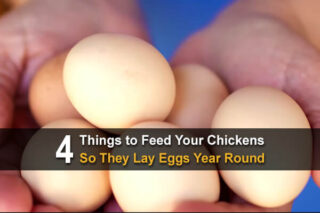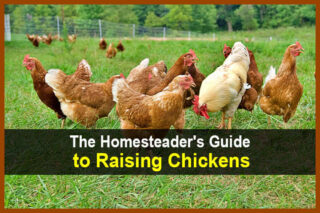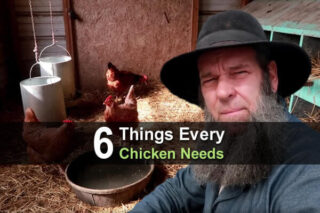Estimated reading time: 15 minutes
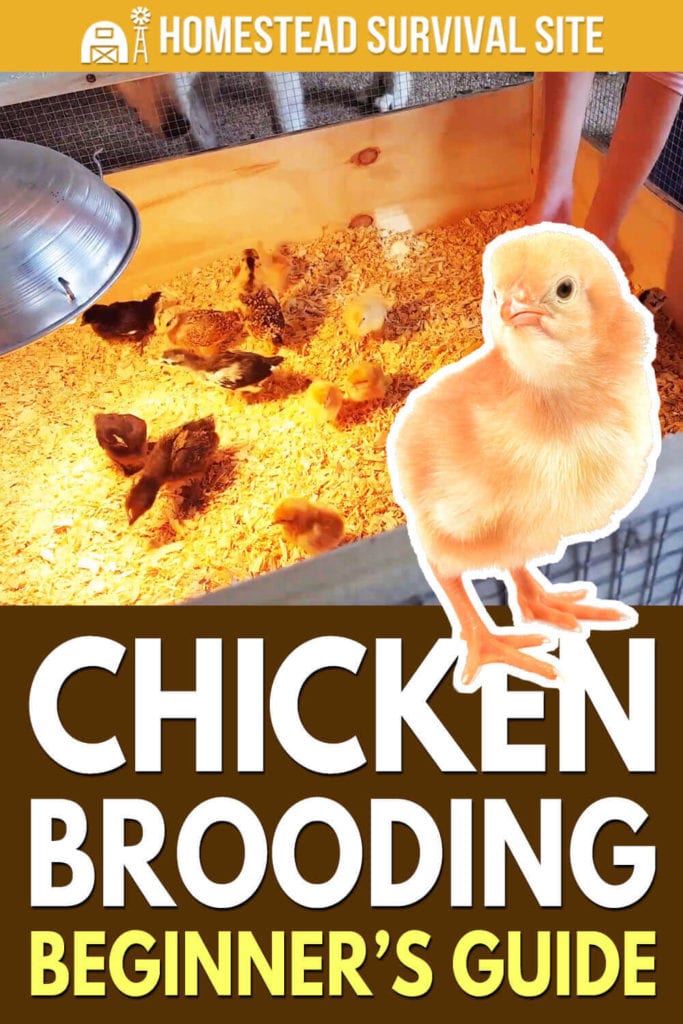
Chicken brooding, whether it naturally occurs or is helped along by human hands, can be an incredibly exciting and rewarding process. Hatching chicks in the winter will likely always require the use of a brooder, even if the momma hen does the bulk of the work herself.
Brooding and brooder are two chicken husbandry terms that can sometimes cause confusion for newbie keepers. The term brooder comes from the chicken hen brooding process. A “chicken brooding” means a hen is sitting her eggs with intense vigor and protectiveness. This is also often referred to as being “broody.”
A “brooder”, on the other hand, is some type of enclosure where chicks are placed after they are hatched to keep them warm and safe, as a mother hen would do if the chicks were left in her care.
There are five steps in the development of a new chick: mating, fertilization, incubating, hatching, and brooding, which can take place with the momma hen or in a man-made brooder. Whether or not you let (or eagerly hope) that a hen hatches her own chicks, keeping them in a brooder alone or with the momma hen may be necessary for their health and safety.
Want to save this post for later? Click Here to Pin It On Pinterest!
What Happens If I Go The Natural Route And Let A Hen Turn Broody?
A chicken going broody sounds like a good thing, right? Well, yes and no. If you are keeping only hens without a rooster, those darling little eggs are simply never going to hatch because they are not fertilized.
Secondly, once the urge to sit takes hold of a hen during a broody stage, she might either start stealing the eggs of other hens or refuse to let her keepers take a single egg out of her nest to put on your breakfast plate … or both.
A broody hen can be nearly as vicious and twice as determined as the meanest rooster when it comes to “protecting” her eggs from human hands. How a hen reacts to the urge to go broody depends a lot on both her personality and breed. Some hens might be resigned to her keepers taking eggs from her clutch without too much complaint; others may not.
One of my homesteading friends had (emphasis on had) a hen that was so broody she stole eggs from all the other hens, often cracking the eggs and harming the other hens in the process. This very broody hen once was found sitting a grand total of 28 eggs. The hen went into full-on attack mode every time someone tried to reach in and snag an egg.
There was no tricking this broody hen with a wood egg slipped into her nest, she could spot a “falsie” in a few seconds. The hen made her way into the cookpot and life settled down in the coop once again, with the rest of the hens being just broody enough to fulfill their duties without drawing blood or causing egg waste.
Having a hen without any urge to be at least a little bit broody can be a truly bad thing, as well. If you don't want to constantly incubate eggs to sustain flock numbers to generate meat and eggs from your poultry birds, hens must learn to properly sit on their eggs.
How Long Does Chicken Brooding Last?
A chicken hen can go broody for about 21 days, the amount of time it takes to incubate her eggs into chicks if they have been fertilized. If you are keeping multiple hens, odds are a few may lay enough eggs to complete a full clutch (clutch amount varies by breed) at the same time, but it is entirely possible to constantly have one hen in brood mode at all times.
Is It Better To Let Hens Go Broody And Take Care Of Their Own Chicks?
During warm weather months, chicks can survive in the outdoors IF their momma hen knows what she is doing and is diligent about her tasks, which definitely does not always happen. If the chicks are left in a coop and run with other full-size hens and roosters even with a good momma hen, they could still get either trampled or attacked … or both.
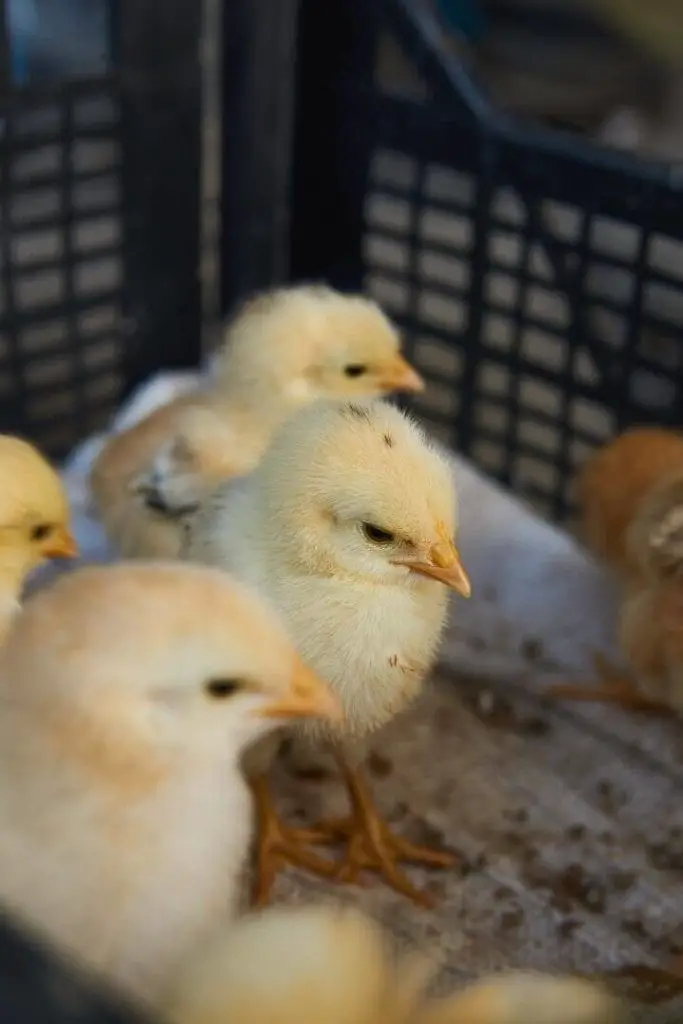
I once had two amazing momma hens hatch chicks within days of each other. These gals knew exactly how to care for their chicks and keep them alive in an outdoor coop environment with a minute’s worth of help from me or my trusty brooder – but tragedy struck.
One hen did not want co-mingling of the chicks and pecked out one’s eyes before I could get the door open and stop the carnage. From then on, when I chose to allow hens that were capable of brooding their chicks on their own naturally, they did so in simple yet separate outdoor brooders.
Dealing with a broody chicken is one of the most daunting tasks a keeper will ever contend with when keeping hens. Preparing for the likelihood that even your most affable hen will suddenly turn broody will help you know when this behavior is likely to begin and how to deal with it so you don’t wind up with bloody hands AND wasted eggs.
When a chicken hen goes broody, it basically means hormones are firing on all cylinders and her maternal instincts are kicking in, big time. The hen’s body is telling her that she earnestly needs to sit on a clutch of eggs and incubate them until the chicks hatch.
There are only two ways to hatch and raise chicks: naturally through broody hens or with the aid of an incubator to hatch the eggs, and a brooder to raise the chicks in until they are old enough (and it is warm enough) to release them into the coop and run.
Why Should You Learn How To Hatch Chicks Using An Incubator And A Brooder?
Using this modern-technology method of hatching and raising chicks simplifies the process and vastly reduces the chances of any chicks being harmed by mature members of the flock, eggs lost because of an overly aggressive broody hen, or environmental conditions out of your control.
Collecting fertilized eggs and placing them in an incubator and then a brooder after they are hatched gives you the best odds of hatching as many chicks as possible. However, this method may not be sustainable during a long-term disaster where you need electricity to operate the incubator and brooder heat lamps. Any equipment failure could definitely be an issue. On our rural survival retreat, we keep what I consider the best-sitting hens that do not act all mean and broody (Bantams) as well as use incubators and brooders.
Banty hens are prone to “adopting” any egg you give her, even a duck egg. Although my successfully hatched chick to juvenile chick rate will likely be lower when relying on Bantam hens instead of an incubator and brooder with heat lamps, I will still be able to keep a sustainable flock of meat and egg birds.
Transferring Chicks From Incubator To Brooder
Some folks keep their chicks in an incubator for days or even a week after hatching instead of putting them into the waiting brooder. This is largely a personal preference that will also depend on the type and size of an incubator you are using.
While the chicks do not need food or water during at least the first 24 hours of life (they garner sustenance from what is left inside of the egg after hatching), I still remove my hatchlings from the incubator a couple of hours after hatching – as soon as they are dry – and place them in the incubator.
Why? I worry that they will rip their tiny young feet climbing in and out of the holes around the remnants of their eggs and because I do not want to clean their droppings out of all the nooks and crannies in the incubator.
Chicks can be moved from the incubator and placed into a brooder only after they are dry. How can you tell if a chick is all dry and warm? They will have “fluffed up” feathers to prove they have warmed all of the damp goo that got on them during the hatching process.
Exactly how long it takes for a chick to fluff up its feathers varies not only by breed but even by individual chick. It typically takes about 60 minutes or so for a chick to get thoroughly dry.
It is highly recommended NOT to lift the hatch on the incubator until you are removing the chicks to put them in the brooder. Each time the hatch is lifted, even for a few seconds, the humidity level is drastically altered and can chill the chicks, potentially making them sick. I always wait until the last chick has fluffed up, then I open the incubator just one time to lift them all out in unison.
Unless you notice a chick that is already dry and starting to pant or show signs of agitation or is repeatedly clumsy, it is not getting too hot inside of the incubator. If a chick shows any of these signs, open the hatch and remove it to the brooder immediately, shutting the hatch quickly to avoid chilling any still hatching or damp chicks.
It can take up to 72 hours for a chick to completely peck through the pip hole it makes to start to crack the egg. DO NOT help the chick hatch unless it has consistently shown visible signs of exhaustion and stress. Human hands, no matter how careful and gently they work, can cause far more harm than good when trying to get a chick out of an egg.
A quick examination of the chick when moving it from the incubator to the brooder is more than enough. Holding the chick in the cold (room temperature) is not good for it, and you could be tempted to tug or cut away anything dangling from the chick. DO NOT do this. You could pull out the tiny chick’s insides. Anything attached to the chick after hatching will eventually dry up and fall away on its own, just like an umbilical cord.
Brooder Set-Up
Make sure you have the brooder already set up and heated to the right temperature before placing the chicks inside. As soon as I see one chick starting to pip through an egg, I get the heat lamps and bedding out and prepare its temporary home.
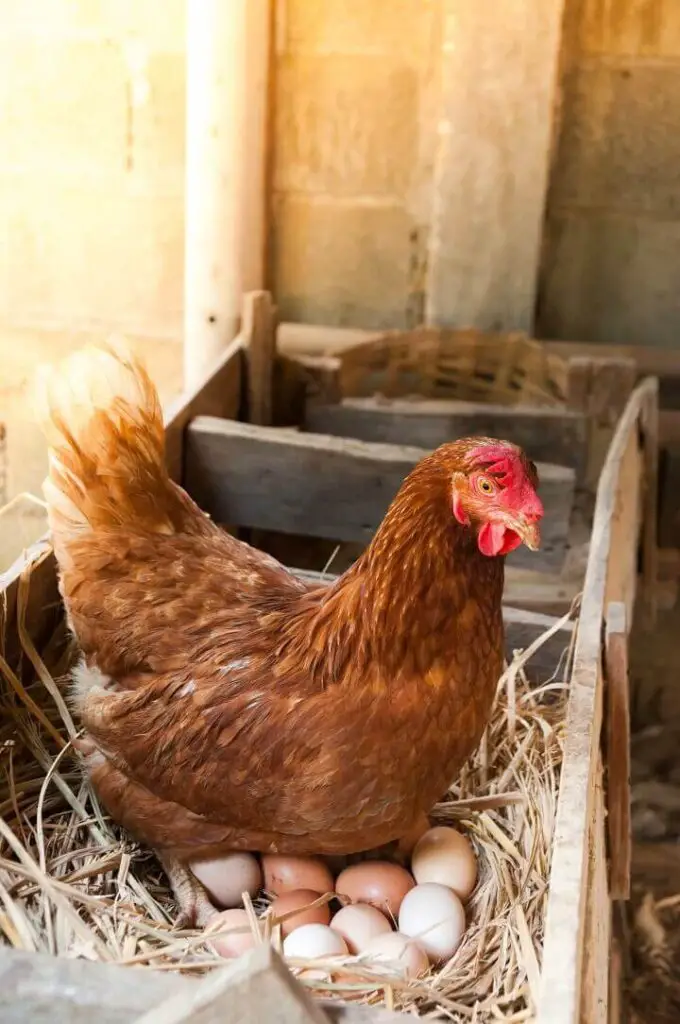
The size of the brooder will depend on how many chicks you'll be placing in it. I brood chicks and ducklings together most of the time, so I use a large livestock tub. The baby poultry birds will enjoy a few simple and safe boredom busters such as a piece of firewood or a portion of a branch to perch upon, peck, and climb around. A content chick is a less noisy or aggressive chick.
Some folks use a small brooder at first then transfer the chicks to a larger brooder that stands up to 3 feet tall to allow the chicks to spread their wings and learn to fly before being released into the established flock. I recommend going this route.
Brooder Box Suggestions
1. Rubber Tub
Either a storage tub or a livestock feed/water tub. These are easy to clean, will not allow leaking, and do not create hot surfaces that can harm the chicks.
2. Metal Tub
While these are also easy to clean, anywhere that is not 100 percent covered by bedding can get hot enough to scorch a chick’s feet or body. Spilled water and droppings can also cause a tub to rust.
3. Cardboard Box
These types of boxes are fine to get chicks home from a store, but even a thick box will get bogged down with waste, food, and water droppings and start to fall apart within just a couple of days. Also, the cardboard boxes create a fire hazard due to the heat lamps.
4. Hardware Cloth (wire mesh) and Wood
If you are going to be using the brooder outdoors or keeping it inside of a garage where bedding and dropping mess is not an issue, building a wood-framed and wire-covered brooder can be quite handy. You will not have to worry about finding a piece of screen or wire to cover one of the other brooder types on this list once the chicks…which happens far more quickly than you may think.
One of the advantages of this type of brooder is the ability to move it outdoors when weather permits to help the chicks acclimate while still keeping them safe from predators.
Where To Place The Brooder
- The brooder should be placed in a location that has a room temperature of about 50 degrees, even if you are using heat lamps.
- Do not place the brooder in direct sunlight due to the fluctuating temperatures it could cause inside of the brooder.
- The brooder should be placed in a well-ventilated area.
- Any cover used on the brooder to prevent chicks from flying out once they hit a couple of weeks old also has to provide ample ventilation. I highly recommend using hardware cloth, chicken wire, or door screening. Make sure the cover is secure around the edges of the brooder so it does not get bumped and become a ladder to climb out. Yes, I had this happen once and had chicks everywhere, and my blue heelers thinking it was snack time! If cats will be around the brooder the cover has to be sturdy to prevent them from weighing it down when not if, they climb on top of it and also try to make the chicks a snack.
- It is especially important to place a small brooder in a spot where it will not get bumped or disturbed by pets, children, or other livestock of any size.
Use hardware cloth (rabbit hutch fencing) and not chicken wire if the brooder is going to be placed in the garage, on a porch, or outdoors. Mice, snakes, and even mink can get inside of the chicken wire and eat your chicks. Chicken wire is good for absolutely only one thing – keeping chickens in. It is lousy for keeping predators out.
Brooder Liner Suggestions
- Newspaper
- Sawdust shavings
- Good old fashioned dirt
- Paper Towels
- Pine Shavings
- Sorghum Moss
- Sand
- Organic Mulch
Remove the brooder liner every three to four days and wipe out the brooder with only warm water to remove any debris. Bacteria and debris will not only cause the chicks to become ill but will attract mice and bugs you do not want in your home.
Chicken Brooder Temperature, Heating, And Humidity Recommendations
I cannot recommend highly enough using only heat lamps with red bulbs and not white when brooding chicks. The white lamps will highlight any dried blood on the chick that occurred during the hatch or from a scratch, and the red lights will help hide the scarlet blood tones.
Chickens are meat-eaters from the day they hatch and are not above cannibalism. If the chicks see blood on one of their brooder mates they are frequently inclined to keep pecking at the spot and injuring or killing their peer.
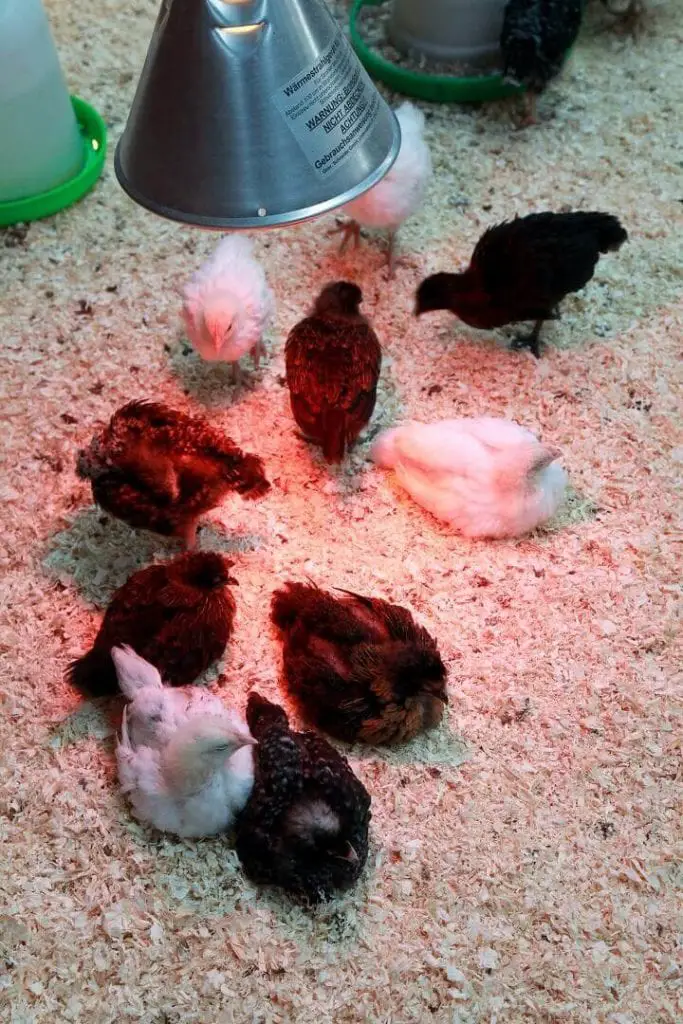
Heat lamps should be pointed down and out and not directly down at the bedding to help reduce the risk of fire from overly dried bedding material.
- The brooder should be kept around 87 to 92 degrees except in the slightly cooler eating and drinking area.
- The humidity should be roughly 40 to 60 percent.
- At the end of each week, adjust the heat lamps by angle or height or both to reduce the heat by about five degrees until you reach room temperature.
Food And Water In The Brooder
Agriculture supply stores sell waterers and feeders specifically for chicks. They are economically priced and come in both plastic and metal – sometimes with just a dish for a waterer that a glass Mason jar is screwed upon.
You can use a shallow dish or lid to place feed in instead of purchasing a chick feeder tray or fountain, but using the standard commercially manufactured chick water will not only keep down waste and wet mess, but will help prevent the chicks from getting into the water and getting chilled.
Feed the chicks chick starter. It comes in both medicated and non-medicated varieties. I only use non-medicated and sprinkle herbs over their feed as a healthy snack and to help boost their immune systems.
Providing grit (oyster grit is sold at agricultura supply stores) is also necessary to help the chicks consume and digest their food properly.
How Long Do Chicks Stay In A Brooder?
That will depend on the time of the year and whether you are placing them in with mature birds. Ideally, the chicks should spend at least five weeks in the brooder before being turned outside. Many keepers wait as long as 8 or even 12 weeks before taking chicks out of the brooder and putting them in a coop alone or with mature chickens.
What To Expect When Chicks Are First Placed In The Brooder?
Some chicks will freak out and run around and squeak – loudly. Others, likely the vast majority of them, will be a bit stunned and scared and stand completely still and quiet and often huddle together for safety.
Once the chicks have had an hour to a few hours to get accustomed to their new temporary home, they will start wandering around to check it out and perhaps even nibble on a bit of food or get something to drink.
Do daily checks on the vent of each chick to make sure they are not getting “pasty butt” which is quite common and not serious unless left uncared for. If droppings pile up and block the vent after getting stuck in the feathers, simply take a warm (but not hot) cloth and GENTLY wipe them away. This issue usually only happens during the first two weeks after hatching.
Like this post? Don't Forget to Pin It On Pinterest!




